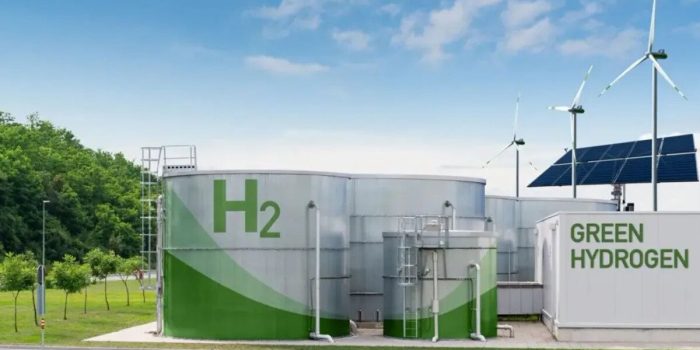In an era focused on green energy and achieving net-zero emissions, MIT researchers have introduced an innovative approach to producing entirely green, carbon-free hydrogen fuel using solar power. Traditional hydrogen production methods heavily rely on natural gas and fossil fuels, tarnishing the green image of hydrogen energy.
In contrast, MIT’s concept, known as solar thermochemical hydrogen (STCH), harnesses the power of renewable solar energy to create an entirely emission-free alternative. However, existing STCH designs have been inefficient, utilizing only about 7% of incoming sunlight, resulting in low yields and high costs.
MIT’s solution involves integrating their STCH system with a concentrated solar plant (CSP), which employs an array of mirrors to focus sunlight on a central tower. The heat generated in the tower is used to split water and generate hydrogen. This method differs from the conventional approach of using electricity to split water through electrolysis.

The heart of MIT’s proposed STCH system lies in a two-step thermochemical reaction. In the first step, water is turned into steam and exposed to a special metal. The metal absorbs oxygen from the steam, leaving hydrogen behind. This metal “oxidation” process is akin to iron rusting when exposed to water but occurs much faster.
Once the hydrogen is separated, the oxidized metal is reheated in a vacuum, reversing the rusting process and regenerating the metal. In this reduced state, the metal can absorb oxygen from steam once again to produce more hydrogen. This cycle can be repeated numerous times.
Each reactor in this system undergoes exposure to the Sun’s heat, reaching temperatures as high as 1,500 degrees Celsius at a hot station. At this stage, oxygen is effectively removed from the metal, leaving it ready to absorb oxygen from steam. Subsequently, the reactor is moved to a cooler station with temperatures around 1,000 degrees Celsius, where it interacts with steam to generate hydrogen.
MIT’s design also includes features that save energy by countering typical losses seen in other STCH concepts. Reactors on opposing sides of the circular track are allowed to exchange heat through thermal radiation, ensuring that hot reactors cool down while cool reactors heat up, keeping the heat contained within the system.

Furthermore, the MIT team introduced a second set of reactors moving in the opposite direction of the first set. These outer reactors operate at lower temperatures and help remove oxygen from the hotter inner reactors without requiring energy-intensive mechanical pumps. This system allows both reactor trains to continuously produce independent streams of pure hydrogen and oxygen.
Through comprehensive simulations, MIT’s design is projected to significantly enhance the efficiency of solar thermochemical hydrogen production, increasing it from 7% to 40%, as compared to previous designs. Researchers believe that if this system proves effective, it could revolutionize energy production, enabling 24/7 hydrogen production and facilitating the transformation of sunlight into liquid fuels.
The team plans to construct a prototype and test it in concentrated solar power facilities at the Department of Energy’s laboratories, which are sponsoring the study. MIT’s pioneering approach to green hydrogen production has the potential to reshape our energy future and contribute to a more sustainable and eco-friendly energy landscape.


